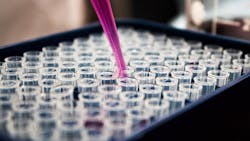By sampling wastewater from the days near the 2021 New Year holiday, researchers in the American Chemical Society’s Environmental Science & Technology Letters report an increased international usage of some synthetic drugs, including eutylone and 3-methylmethcathinone (3-MMC) compared to the previous year.
New synthetic drugs, also known as new psychoactive substances (NPS), include drugs made in clandestine labs without consistent methods or ingredients, as well as pharmaceuticals that are diverted into the illegal NPS market. Abuse of these substances can lead to overdose and death. NPS are tracked by forensic toxicologists, drug enforcement authorities and public health officials, but their global pervasiveness is still elusive because each agency obtains and stores their information in different ways, and not every user or dealer is identified.
In contrast, wastewater epidemiology — a comprehensive survey of community-level drug consumption or disease presence — can provide widespread, consistent and near real-time information. And, because everyone goes to the restroom at some point, nearly all members of a population can be monitored with this analysis.
Two of the study’s authors are co-founders of a company that provides commercial wastewater epidemiology services, and one of the authors is the founder of a wastewater testing nonprofit project.
In the days surrounding Jan. 1, 2021, the researchers collected raw wastewater samples from 25 treatment plants in 10 countries across Asia, Oceana, Europe and North America. With liquid chromatography-mass spectrometry, they searched for 27 unmetabolized NPS. Eleven of these compounds were detected, with only one site in Fiji having no measurable amount for any of the substances.
The team found that most of the compounds were synthetic cathinones, also known as “bath salts.” Within this class of NPS, methcathinone, eutylone and 3-MMC were detected most often and had the highest per capita levels in wastewater. However, methcathinone also can result from the degradation of two legal decongestants, ephedrine and pseudoephedrine, so the researchers were hesitant to link it only to illicit drug consumption.
Finally, when the researchers compared the 2020-2021 New Year period to the prior year’s holiday, eutylone and 3-MMC had an increased international presence. They report found that 3-MMC was found for the first time in New Zealand, despite international travel restrictions. By expanding the number of sites and countries investigated, the researchers say they have provided new insights into the constantly shifting global NPS consumption patterns.



